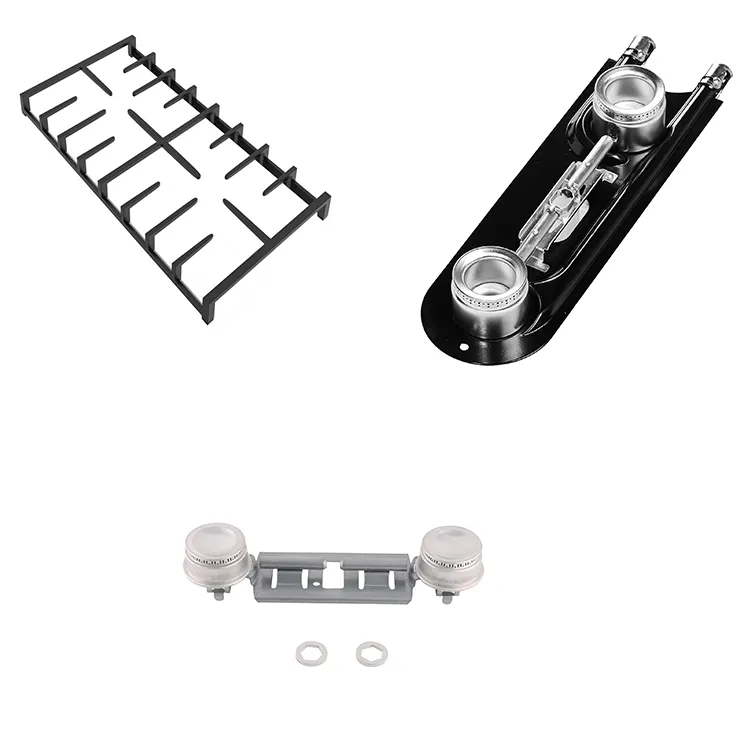Å setja inn ein grilla til brennaren kan sjå lett ut, men det er spesielle metoder og ting som, når dei vert haldne i hug, gjer at grilla kan leggjast inn vellukka. Denne vegvisaren vil gje deg gjeldande strategiar for å hjelpa deg med å styre prosessen godt. Å få dei rette ferdighetene for å plassere ein komfyr eller rangegrat dekker mange aspekter frå planleggingsdesign til rett anleggsteknikkar vil forbetra matlagingsopplevelser og holdbarheten til komfyren din.
Forståelse av komponentene
Gratene på ovnen din har flere flytende deler som må forstås før faktisk montering av graten kan begynne. Materialet gratene er laget av vil vanligvis være enten kast jern eller rostfritt stål, begge med spesifikke fordeler. For eksempel holder kast jerngrater mye varme som trengs for høytemperaturkokning, mens rostfrie stålgrater kan skrubes og blir ikke rostete, noe som gjør dem enklere å vedlikeholde. Det er viktig å merke seg hvordan disse materialene påvirker håndteringen og installasjonen av graten.
Forberedelse før installasjon
Hver ovninstallasjon begynner med riktig forberedelse for å sikre at kokkingen går uten problemer senere. Vi anbefaler at ovnen din slås av først og har kjølet fullstendig. Sikkerhet er den viktigste sakken. Deretter bør du sørge for å samle verktøy som kanskje trengs, som en skrueavgjører, nivell og rengjøringsmidler. Det er best å fjerne gamle deler først uten å skade noen ovner eller komponenter. Området der den nye delen skal plasseres, må være fullstendig rent og fri fra matrestanter og fett, ettersom disse bitene kan forårsake komplikasjoner senere.
Trinn for installasjon av den nye graten
Lignende til monteringsprosedyren, mens du fester den nye gryteplaten, sørg for å plassere den på brænerne og juster den med dem. Det er viktig å sjekke at gryteplaten ikke trenger å tvinges på plass, ettersom dette vil føre til sprakkering og fremtidige problemer. Forsikre deg om den riktige plasseringen av de stive føttene: de må kunne stå stille mens de holder gryteplaten på plass når kokning begynner. Etter den foregående steget kan en arbeider trygt bruke koken og sjekke de justerbare delene av koken: tunge kjøkkenkar må settes ovenpå for simulering. Alle delene må være godt festet siden mye vekt vil bli satt på dem.
Testing av installasjonen
Som med alle nye installasjoner av kjøkkenapplikasjoner, er det avgjørende å teste kokeplaten ordentlig etter installasjon for å sikre at alle komponenter fungerer som hensikt. Sjekk at brannerne fungerer ved å slå dem på og se om de tennes uten problemer, og merk deg at flammen er jevn fra alle deler av platen. Hvis du observerer at flammen er uregelmessig, kan det tyde på at det er en blokkering i brannerne, at brannerne ikke er plassert riktig, eller at det er et problem med brannerne selv. Hvis det oppstår noen problemer, skru alltid av kokeplaten og juster platen etter behov.
Vedlikeholdstips
Etter at kokestykket har blitt installert, bør spesiell oppmerksomhet rettes mot vedlikeholdet av koken for å sikre at den aldres godt og fungerer effektivt. Routinemessig rengjøring er nødvendig, ettersom matresten som blir etter på koken kan akkumuleres over tid og hindre kokeeffekten. For jernstokkede staver, bør du vurdere å sesongføre dem fra tid til annen for å holde dem fri fra rost. Staver laget av edelstål bør behandles og rengjøres riktig uten abrasiv komponenter, da dette kan la til skraper på overflaten. Alltid sikre at koken er i en effektiv tilstand, ettersom trekk ikke bare gjør koken mer attraktiv synligvis, men også trygg å jobbe med.
Oppdateringer i bransjen
Med hver ny smart enhet som kommer på markedet, ser vi en tydelig endring mot integrering av intelligens teknologi i ovner og koker. I dag finnes det en rekke nye ovner og koker med systemer som kokker og varsler når bestemte temperaturer for dyr må holdes eller reduseres, og selv aktivere sikkerhetsmodus noen ganger for å sikre økt effektivitet. I tillegg gjøres det fremskritt i materialene brukt for rasten på kokeren, med nye legemer som kombinerer egenskapene fra kastesjøl og rostfri stål for de beste aspektene. Å oppdatere seg om nye teknologier kan gi forbrukerne muligheten til å gjøre riktige justeringer når de oppdaterer eller kjøper nye kjøkkenapparater.

